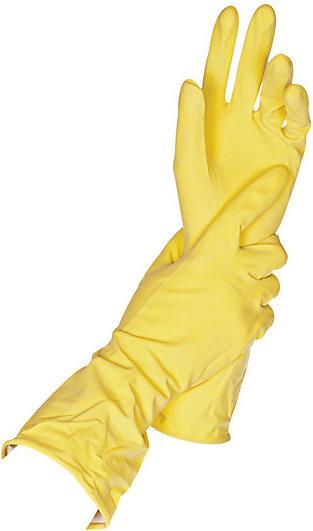
Hygostar Universal and household gloves

It’s been almost ten years since we moved into our terraced house and replaced all the window frame sealant while we were at it. Fast forward a decade and those seals are no longer a bright white. In an attempt to restore their old beauty, I armed myself with mould removers. Did it work? Find out here.
Our house isn’t particularly large. However, the very generous windows keep any sense of confinement at bay. But the large windows have their price. For one, they’re covered in smudges in no time thanks to grubby little children’s hands. Then, there’s a problem in winter. The warm and humid air in the living room cools down at the windows, which creates a considerable amount of condensation. That’s why we’ve long since adopted the habit of airing the room thoroughly first thing and also wiping down the window seals with a cloth.

Despite our efforts, the putty that used to be a crisp white has acquired more and more small black specks of mould in recent years.
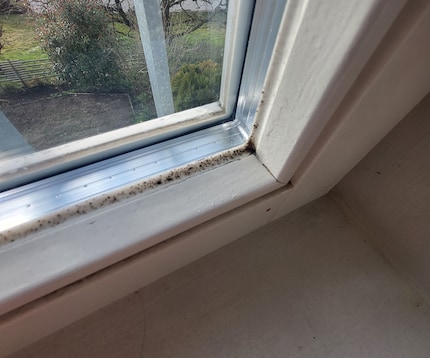
The corners, in particular, have turned black. It seems, all that wiping and drying couldn’t prevent a small layer of mould from forming.
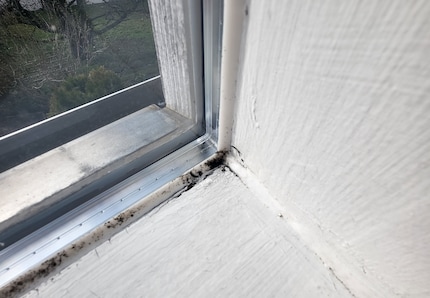
For a long time, we weren’t too bothered by this. It was a gradual process, after all. But almost exactly ten years after moving in, I was ready to give those putty seals a makeover.
I ordered various [mould removers from Galaxus](search?q=mold remover&is=mold) to fight the mould stains around our windows.
To find out if the cleaners vary in terms of cleaning power, I used a different one in each of the five rooms.
I applied the window sealant in the morning and let it sit for a few hours. Incidentally, that’s also what the instructions say on the bottles.
Armed with a sponge, a rag and quite a bit of anticipation, I set about cleaning in the afternoon. I selected two test fields for my endeavour. First, I got to work on the mould that had grown inside the window frames.
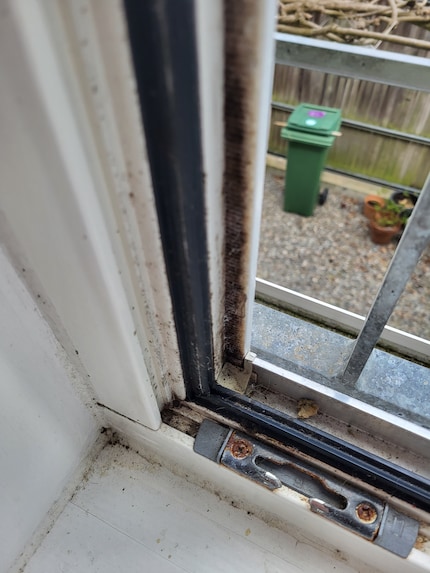
When I scrubbed away at the mould a few hours after spraying, most of it came off easily. Success!
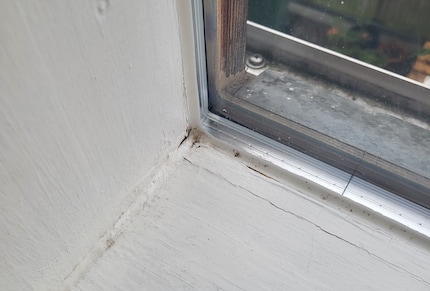
Things proved trickier when I tried to remove the mould on the putty seals. I wasn’t happy with the first result, so I sprayed the seals again and let the mould remover sit overnight. This did noticeably improve things visually.
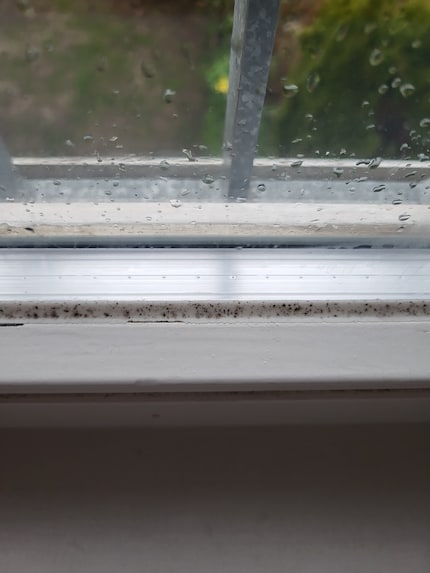
However, I didn’t manage to completely remove the mould stains, despite the putty seals being exposed to the cleaning agent for almost 24 hours in total.

I finally had to bury my original intention of carrying out the type of test you’d come across in Swiss consumer magazine «Kassensturz». In other words, testing five cleaners (see header image) for effectiveness and value for money. Being the mould layman that I am, I just couldn’t make out any difference between them. Except for the smell, perhaps. To tackle the mould on the window seals in the bathroom, I used a chlorine cleaner. The stench of chlorine, which reminded me of toilets in South America, was so overpowering that my wife cut short her session in the bathroom after just 15 minutes. Otherwise, she would probably have been sick.
The smell reminded me of bleach, which is often used for cleaning or, well, bleaching. This is because bleach contains chlorine among other agents.
But it’s not just the smell of the chlorine-based cleaner that’s a downer. Chlorine also causes irritation to the skin and eyes, so contact should be avoided. In other words, make sure to use rubber gloves when applying this type of cleaner.

Hygostar Universal and household gloves
Even though the result wasn’t entirely satisfactory, my declaration of war against mould still proved worthwhile.
But as the saying goes: better safe than sorry. So I’m going to apply some extra mould protector to the putty. Let’s see if it works.
However, if the seals continue to discolour over the next few years – and I fear that’s exactly what they’ll do – there are really only two options, both of which are pretty uncool. I could replace them myself.
Sadly, that’s not only time consuming, but also tricky in terms of getting good results.
Or I could have them replaced by professionals. Just like I did ten years ago. But that’s really pricey. Maybe we’re better off living with the black spots around our windows.
Header image: Martin Rupf
Half-Danish dad of two and third child of the family, mushroom picker, angler, dedicated public viewer and world champion of putting my foot in it.